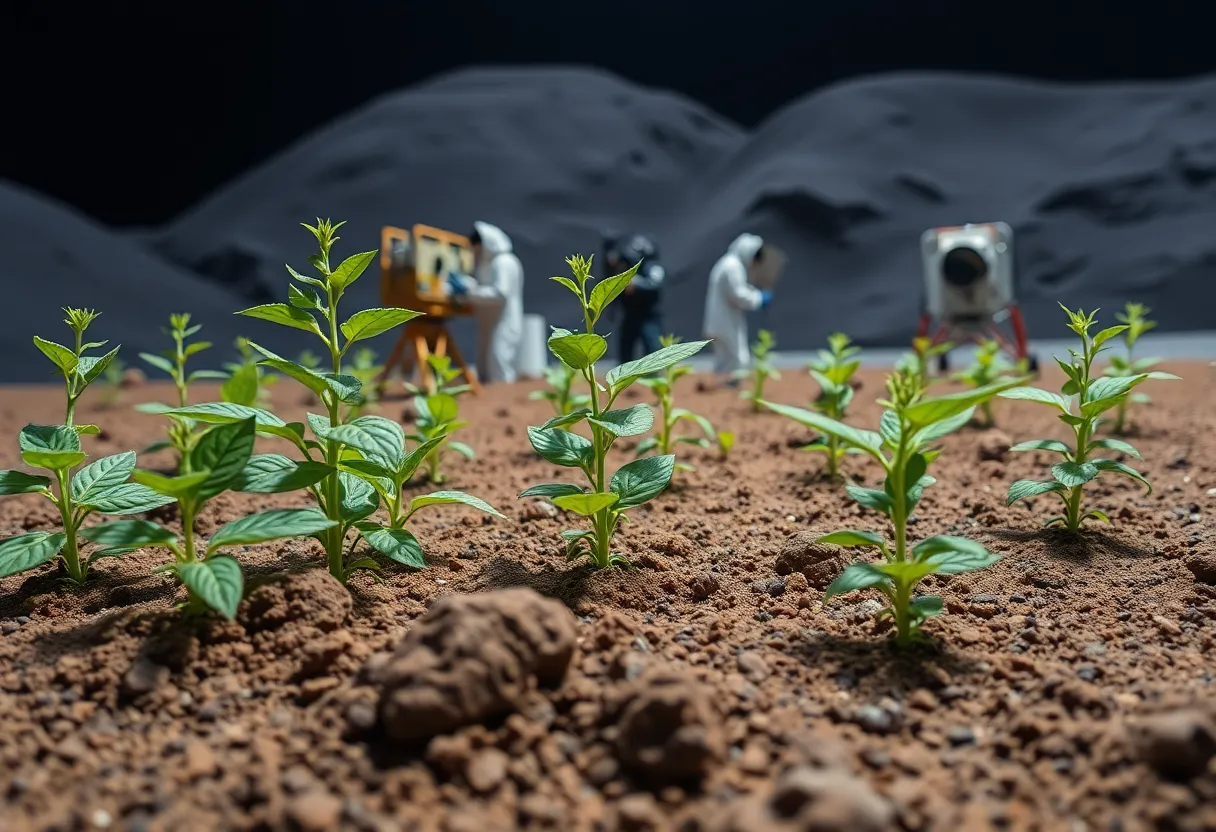News Summary
A graduate student at Texas A&M University is leading innovative research to cultivate chickpeas in lunar regolith simulants aimed at supporting NASA’s Artemis program. Jess Atkin’s work involves introducing microorganisms to enhance plant growth in harsh lunar conditions, marking a significant step towards sustainable agriculture on the Moon. This research not only has implications for space missions but could also benefit Earth’s farming challenges, particularly in nutrient-deficient soils. With ongoing collaboration and exploration, the future of lunar farming looks promising.
Exciting News from College Station: Texas A&M Student Makes Strides for Moon Agriculture!
College Station, Texas – In a remarkable feat that’s sparking excitement across the scientific community, a graduate student at Texas A&M University is paving the way for sustainable agriculture on the Moon! Jess Atkin, who’s currently in her third year of a Ph.D. program in soils and crop sciences, has taken on the impressive task of growing chickpeas in a moondust simulant that mimics real lunar regolith.
The Vision for Moon Farming
The primary goal of Atkin’s groundbreaking project is to transform a lunar environment, which is known to be toxic for plants, into a suitable substrate that can support plant growth. NASA’s long-term mission includes sending astronauts to the Moon to establish a permanent base, and growing food on-site would drastically reduce the need for expensive resupplies from Earth. After all, a consistent food source would help ensure the well-being of astronauts on extended missions!
Understanding the Challenges of Lunar Regolith
To grasp why this project is so significant, it’s essential to understand what lunar regolith actually is. This abrasive material consists of sharp rock chips, mineral fragments, volcanic glass, and heavy metals – not the most welcoming environment for our beloved chickpeas! The lack of nitrogen in regolith, which is crucial for plant health, poses an additional hurdle.
Innovative Solutions
To tackle these challenges, Atkin has ingeniously introduced two types of microorganisms into the regolith. These are rhizobia and mycorrhizae. The mycorrhizae work to stabilize the regolith’s structure while enhancing the plants’ ability to absorb nutrients. Meanwhile, the rhizobia do their magic by converting nitrogen from the atmosphere into a form that plants can utilize. It’s a beautiful collaboration between nature and science!
Building the Future of Moon Agriculture
Atkin’s research marks the first-ever experiment aimed at cultivating plants on the Moon as part of NASA’s ambitious Artemis program. Not only is it vital for future lunar missions, but it also holds great potential for solving agricultural challenges back here on Earth, particularly in regions suffering from drought and nutrient-deficient soils.
A Collaborative Effort
Atkin isn’t alone in this quest for lunar agriculture. Another Texas A&M Ph.D. candidate, Harrison Coker, is exploring the integration of lunar regolith with aeroponics—a technique that involves growing plants in a nutrient-rich mist. Coker has found positive signs that plant roots can extract essential nutrients even from Mars soil simulants, indicating a promising future for growing crops in low-gravity environments.
Ongoing Research and Future Prospects
While the prospect of constructing greenhouses on the Moon is enticing, it does come with challenges, particularly concerning the heavy metals present in regolith. Before this dream becomes a reality, further research is essential. Atkin and her team are committed to optimizing regolith for plant growth over multiple generations, which includes developing portable growth chambers that could one day be transported to the Moon for actual testing.
Looking Ahead
The rugged climates of the Moon certainly present challenges, from extreme temperatures to radiation exposure and low gravity. However, Atkin’s pioneering work signifies the beginning of a new era of exploration and sustainability. With the hopes of making space farming a reality, this innovative research could not only help astronauts in the cosmos but also improve agricultural systems right here on our home planet. Exciting times are ahead!
Deeper Dive: News & Info About This Topic
HERE Resources
Texas A&M University to Establish Permanent Presence on ISS
Additional Resources
- Statesman Sports
- Wikipedia: Chickpea
- Rivals
- Google Search: Moon Agriculture
- Gig ‘Em Gazette
- Google Scholar: Lunar Regolith Agriculture
- ESPN
- Encyclopedia Britannica: Sustainable Agriculture
- KBTX
- Google News: NASA Artemis Program







